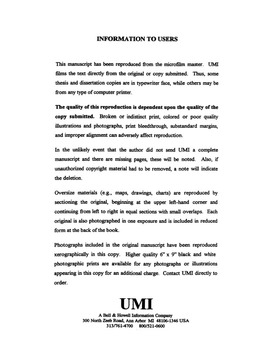| dc.contributor.advisor | McQuarrie, Frank, | en_US |
| dc.contributor.author | Jack, Rita Mae Powers Gunsalus. | en_US |
| dc.date.accessioned | 2013-08-16T12:30:29Z | |
| dc.date.available | 2013-08-16T12:30:29Z | |
| dc.date.issued | 1999 | en_US |
| dc.identifier.uri | https://hdl.handle.net/11244/5791 | |
| dc.description.abstract | This study examined advisement techniques middle school teachers in schools, without formal advisement programs, utilized during class time that were related to advisement. The study examined two questions: (1) What advisement techniques are being utilized by the middle school teacher during regular scheduled class time? and, (2) If middle school teachers are using advisement, can their guidance techniques be matched with a specific counseling method? | en_US |
| dc.description.abstract | The research in this study was guided by an ethnographical methodology. This study utilized qualitative methods to obtain what advisement techniques middle school teachers in schools without formal advisement used during class time. The study was conducted in a suburban school district. The population for this study was the middle school teachers assigned to the five middle schools in the suburban school district. The sample was three randomly selected teachers from the five middle schools. Triangulation of the data was achieved through, structured interviews with the teacher participants, classroom observations, and structured interviews with the principals which had evaluated the teacher participants. | en_US |
| dc.description.abstract | The literature was reviewed in the following areas: (1) changes in societal factors which defined the need for classroom advisement; (2) The middle school concept which specifically, established an environment conducive to the needs of the adolescent; (3) The role of the middle school teacher and the expectations of teachers using the middle school model; and (4) Teachers using advisement in the classroom during their regular scheduled class time at the middle school level. | en_US |
| dc.description.abstract | After all the data were collected and the tapes were transcribed and observation notes were reviewed, patterns were examined by means of a chart. As a result of reviewing the patterns listed on the chart and finding connections between the different methods, advisement techniques utilized during regular scheduled class time were identified. However, none of the advisement techniques could be matched with a specific counseling method. This did not mean that teachers were not using advisement. This study seemed to indicate that teachers use an eclectic approach when advisement takes place during regular scheduled class time. | en_US |
| dc.format.extent | ix, 85 leaves ; | en_US |
| dc.subject | Education, Secondary. | en_US |
| dc.subject | Education, Guidance and Counseling. | en_US |
| dc.subject | Counseling in middle school education. | en_US |
| dc.title | An examination of advisement techniques of middle school teachers. | en_US |
| dc.type | Thesis | en_US |
| dc.thesis.degree | Ph.D. | en_US |
| dc.thesis.degreeDiscipline | Department of Instructional Leadership and Academic Curriculum | en_US |
| dc.note | Source: Dissertation Abstracts International, Volume: 60-04, Section: A, page: 1026. | en_US |
| dc.note | Major Professor: Frank McQuarrie. | en_US |
| ou.identifier | (UMI)AAI9925605 | en_US |
| ou.group | Jeannine Rainbolt College of Education::Department of Instructional Leadership and Academic Curriculum | |
